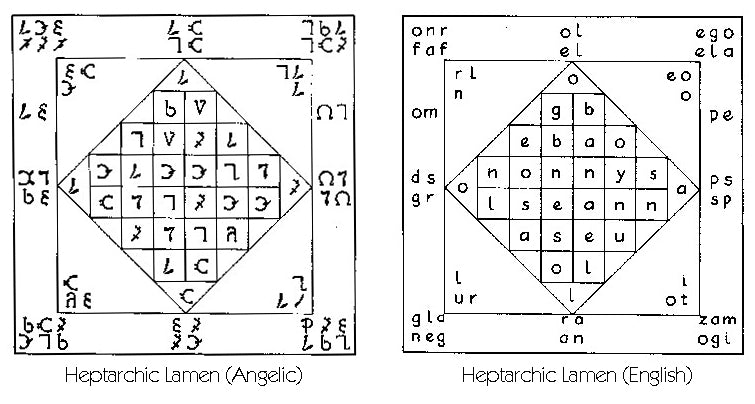
Exploring the Enochian System: The Heptarchia Mystica and the Angelic Hierarchies
Oracle SothisIn the annals of Western ceremonial magick, few systems have captivated the imagination and scholarly interest as profoundly as the Enochian system of magick, introduced by Dr. John Dee and Edward Kelley in the late 16th century. Among its various facets, the Heptarchia Mystica stands as a seminal and intriguing component, offering a glimpse into the complex interplay between celestial hierarchies and magickal practice.
The Genesis of Heptarchia Mystica
The Heptarchia Mystica represents the first system of magick imparted to Dee, framing a planetary angel magick that, while stylistically unique, shares a thematic kinship with the Solomonic grimoires of its era. It's a testament to the fusion of Renaissance esoteric thought with the emergent practices of ceremonial magick.
The Sacred Implements
Central to this system are the physical tools designed for the magickal rites: a ring, several lamens (magickal pendants), and the Holy Table, or Table of Covenant. These instruments were not mere ceremonial trappings but vital to the operational framework of the Heptarchia Mystica.
The ring, purportedly similar to that used by Solomon, was simple yet potent, inscribed with the Latin phrase "PELE," translating to "He will work wonders." This ring was said to be integral for the protection and authority of the practitioner. The lamens varied in design, with one specific lamen recommended to be crafted from gold and worn continuously as a shield against malevolent forces.
The Holy Table formed the ritualistic heart of the system. Described as a two-cubit square and of equal height, it was more than a mere table; it was a symbolic representation of the magickal cosmos. Small copies of the Sigillum Dei Aemeth, a complex seal embodying divine and angelic names, were placed beneath its legs. The table itself was adorned with a Star of David, planetary symbols, and a perimeter of letters – all contributing to its sanctified role.
Atop this table sat the principal Sigillum Dei Aemeth, a disc of wax intricately inscribed with names and symbols, central to the practice of scrying and communication with angelic entities. This sigil was not just a protective emblem but a conduit for spiritual energies and a map of divine and angelic orders.
The Angelic Hierarchy
The Heptarchia Mystica's angelic hierarchy consists of 'Good Angels,' high celestial powers presiding over various aspects of existence. These entities, revealed to Dee and Kelley, were organized into a system of Kings and Princes, each governing wisdom, counsel, commerce, elemental qualities, and more. The names of these entities, extracted from enigmatic tables of letters and numbers, formed a complex web of celestial governance and power.
The Magickal Process
In practice, the Heptarchia Mystica's rituals were profound and structured. The magician, seated at the Holy Table and adorned with the ring and lamen, would commence by invoking the King associated with the specific working. This invocation was a meticulous process, involving petitions and calls to the King, his Prince, and their ministering angels. The culmination of this rite was the manifestation of these beings within the scrying stone, followed by the magician charging them with the tasks at hand.
Conclusion
The Heptarchia Mystica represents a fascinating confluence of celestial hierarchy, magickal symbolism, and ritual practice. It exemplifies the depth and complexity of Enochian magick, standing as a testament to the rich tapestry of Renaissance occultism and its enduring influence on contemporary magickal traditions. As we delve into its intricacies, we gain not only knowledge of a historical system but also an appreciation for the profound spiritual aspirations that have driven humankind's esoteric pursuits throughout the ages.
For those who never stop questioning, who seek what others overlook, there’s a place that exists beyond the ordinary. At www.patreon.com/mysticeb, knowledge isn’t just collected—it’s revealed, piece by piece, to those willing to dig deeper. If you’re one of the few who seeks more, your journey awaits.
